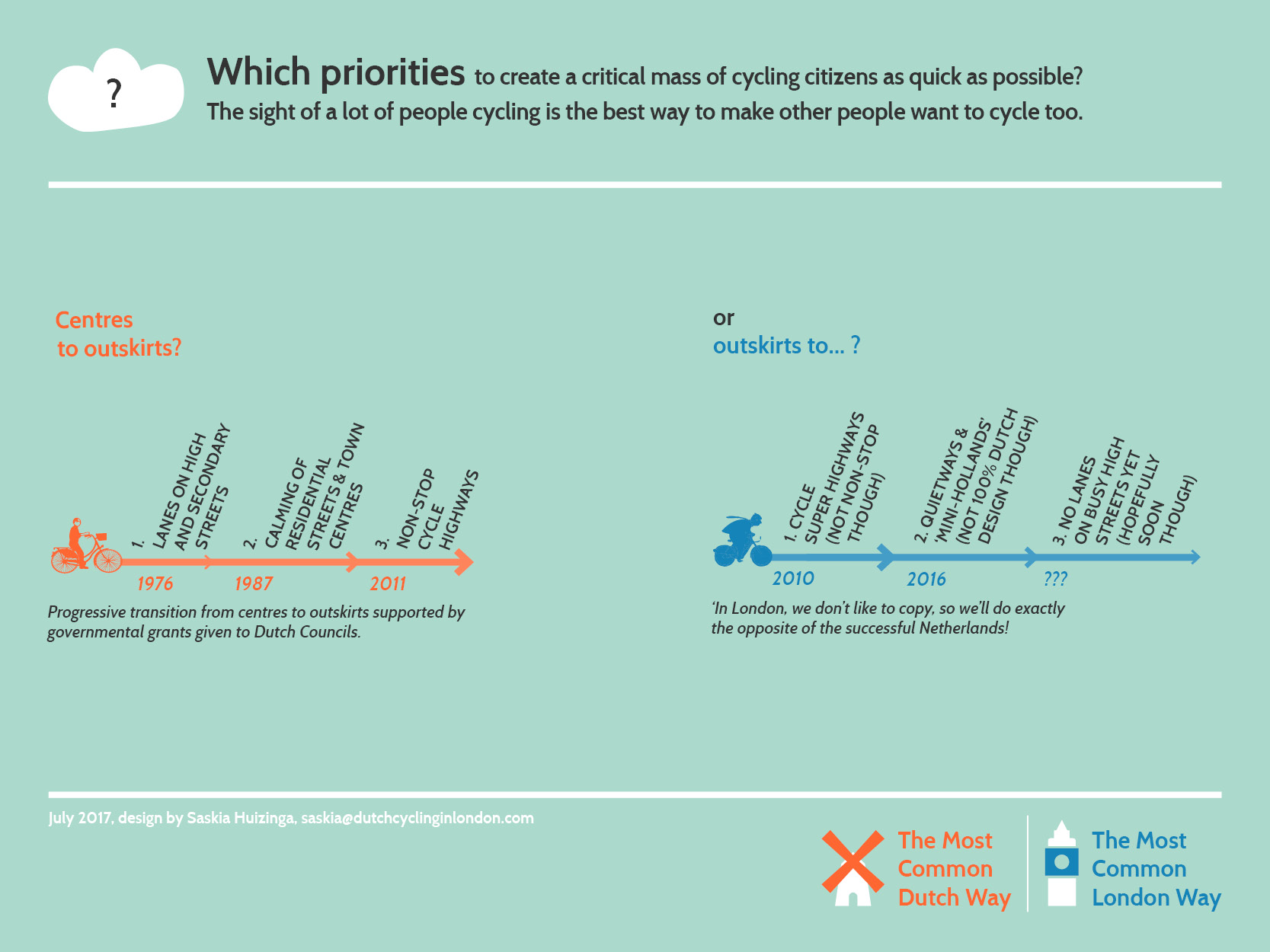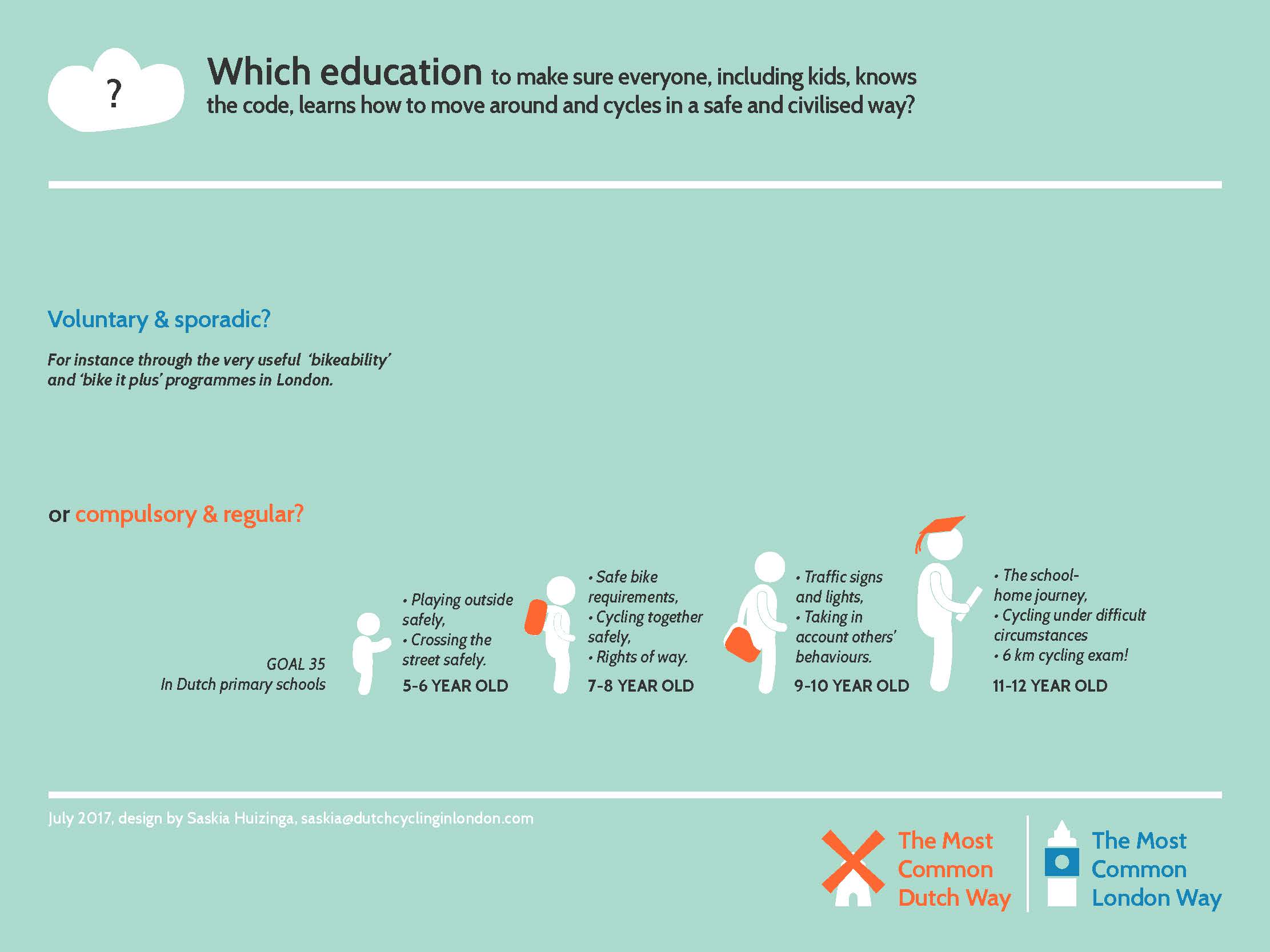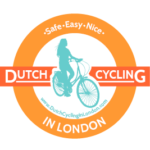DISCOVER
Which priorities to quickly create a critical mass of cycling residents?
Seeing many people cycling is the best way to encourage others to cycle.
Authorities and politicians are determining the cycling strategy for London. They are responsible in making London attractive enough for people to cycle and eventually turning the capital in a greener and more relaxed place to live.
Golden rule
SAFETY. Even with the the most protecting gears they would find, cyclists are still as vulnerable as pedestrians. Just like the latter need pavements to feel safe, cyclists need evident, comfortable and continuous lanes everywhere – or alternatively, shared spaces equipped with obstacles for other road users to drive at very low speed. Where to start to make London safe to cycle as everything needs to be done?
photo@fietschic

Knowing our priorities
In the Netherlands, it is now safe and easy to cycle anywhere and it looks like it has always been like this.
- Residential streets are designed so pedestrians and cyclists have the priority and motorised vehicles have to drive slow (woonerf design).
- High streets have well marked bicycle lanes that let all road user know that cyclists have an important place as well.
- Motor highways and railways between cities are often joined by a cycle highway!
But this didn’t all happen in once ! When everything needed to be done, first the Dutch government encouraged cities to make their main roads and high streets safe (seventies), then they helped them making their residential streets more liveable (eighties) and finally, they support them in developing cycle highways from their outskirts to their centres (2010s). Not the opposite!
Making the right investment for the biggest impact
What do you think is the best decision to make in terms of investment to create the critical mass of cyclists we need to help London make the transition to a green and relaxing atmosphere?
- Continue to develop expensive cycling schemes that only quietway residents and cycle superhighway racers might want to cycle on, and promote cycling as a side mode of transport (= be exclusive and show-off with theoretical concepts?);
- Spend less money to make first all existing high streets safe for all types of cyclists to use and promote cycling as a normal mode of transport (= be inclusive and show modesty and pragmatism?).
Don’t design streets that make the 5% already cycling slightly safer. Build them to entice the other 95% onto bikes.
– @modacitylife pic.twitter.com/kDjwHQIiTX— 21st Century City (@urbanthoughts11) 5 mars 2017
Dealing with a low budget and efficiency
The new government is aware that helping people to cycle has a very high return on investment on different areas: accessibility, sustainability, economy, health… and therefore will allocate a bigger budget for grants to distribute to councils and provinces, just like in the seventies.
But Dutch authorities generally face a diminution of their budget just like everywhere in Europe though. Therefore they create plans that are prioritised, cross-beneficial and cost-effective. They include clear organisation, funding, testing and monitoring measures.
Sign up to our newsletter
A project supported
by the Academy of Urbanism
A project initiated
by Saskia Huizinga




